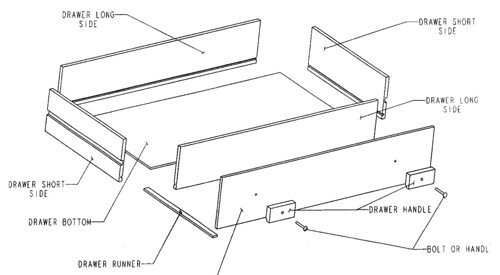Over the weekend I seriously started thinking about picking up another project for the garage (a non-running motorcycle which sounds pretty easy to fix - but that's how ALL my projects tend to start out.)
Anyways, I have a tall dresser where the drawers have pretty much fallen apart. In looking over the existing drawers, I really don't see much that looks salvageable, other than the faces of the drawers. So, I need to make about 7 new drawers for this dresser. I've never done this before. What I could use are recommendations as to what type/size wood to use for the drawers. I'm assuming some sort of ply for all 4 sides. Maybe a thin ply for the bottom? What do you all recommend?
Also, what type of joinery should I be using? Box joint? Rabbet? ??? If it makes a difference, the dresser is for my teenage son. He's not really delicate in his handling of most objects.
Thanks!
